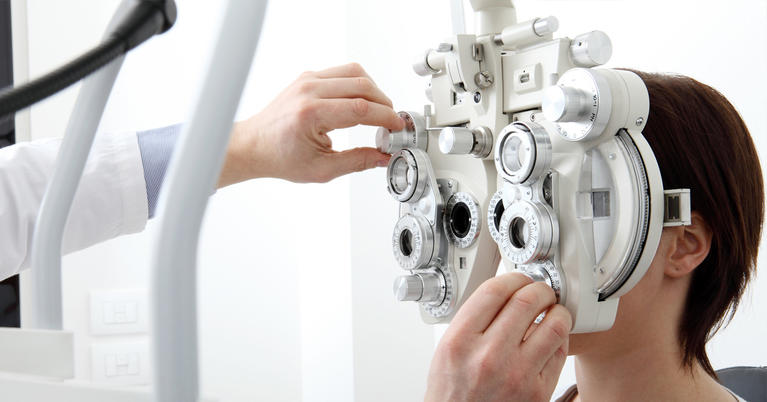The Pros and Disadvantages of Different Refractive Surgical Treatments for Improved Eyecare

LASIK Surgical Procedure
LASIK surgical procedure is a typically done refractive procedure that intends to correct vision problems such as nearsightedness, astigmatism, and farsightedness. Throughout the procedure, a thin flap is developed on the cornea, and a laser is made use of to improve the underlying cells, correcting the refractive error.
One of the primary benefits of LASIK surgical procedure is the fast renovation in vision experienced by many clients. It is crucial for people considering LASIK surgical procedure to undertake an extensive evaluation by an eye care professional to establish if they are ideal prospects for the treatment.
PRK Procedure
The PRK treatment, additionally known as Photorefractive Keratectomy, is a kind of refractive surgery that aims to fix vision problems similar to LASIK surgical treatment. Unlike LASIK, which entails producing a flap in the cornea, PRK functions on the surface layer of the cornea.
One of the advantages of PRK over LASIK is that it eliminates the danger of flap-related issues given that no flap is produced throughout the surgical treatment. This can be useful for people with slim corneas or those associated with get in touch with sporting activities where eye injury is an opportunity. The recovery time for PRK is commonly much longer contrasted to LASIK, as the external layer of the cornea requires time to regenerate after the treatment. Regardless of the longer healing duration, PRK can be a suitable alternative for people looking for vision improvement surgery.
SMILE Surgical Treatment
An advanced refractive surgical procedure strategy getting appeal in the field of ophthalmology is SMILE Surgical treatment. Tiny Cut Lenticule Removal (SMILE) is a minimally invasive procedure that fixes vision by improving the cornea utilizing a femtosecond laser. Unlike traditional LASIK surgical procedure, SMILE Surgical procedure entails producing a small cut in the cornea to remove a lenticule, which causes much less interruption to the corneal structure and potentially faster recovery times.
One of the key advantages of SMILE Surgical treatment is its capability to treat myopia (nearsightedness) and astigmatism with high accuracy, bring about excellent visual end results for clients. The minimally intrusive nature of the treatment likewise decreases the threat of difficulties such as dry eye disorder, making it a positive option for people seeking refractive surgical procedure.

LASEK Strategy
Having discovered the advantages and factors to consider of SMILE Surgical treatment, another noteworthy refractive surgery technique worth analyzing is the LASEK Strategy. LASEK, which means Laser-Assisted Subepithelial Keratectomy, is a form of laser eye surgical procedure that intends to deal with refractive mistakes such as myopia (nearsightedness), hyperopia (farsightedness), and astigmatism.
Unlike LASIK, LASEK does not include creating a corneal flap. Instead, throughout a LASEK treatment, the surgeon utilizes a diluted alcohol remedy to loosen the slim outer layer of the cornea, known as the epithelium.
One of the main benefits of LASEK is that it can be ideal for individuals with slim corneas that might not be good prospects for LASIK. Additionally, LASEK normally results in marginal post-operative discomfort and a quicker recovery time compared to PRK. However, the aesthetic recuperation process with LASEK may be slightly longer than with LASIK.
Implantable Contact Lenses
Implantable Contact Lenses use a long-term vision adjustment service for individuals seeking an option to conventional get in touch with lenses or glasses. These lenses, additionally called phakic intraocular lenses, are surgically inserted right into the eye to remedy refractive mistakes such as nearsightedness (nearsightedness), hyperopia (farsightedness), and astigmatism. andalusia pediatrics. Unlike typical call lenses that sit on the surface area of the eye, implantable contact lenses function within the eye itself, offering clear vision without the need for everyday upkeep or removal
One of the crucial benefits of implantable get in touch with lenses is their durability. Once placed, they can continue to be in the eye indefinitely, offering constant and secure vision adjustment. Furthermore, these lenses can be a superb alternative for people who are bad prospects for laser eye surgical treatment or that like a reversible vision adjustment procedure.
Nevertheless, implantable contact lenses do carry some dangers, consisting of the potential for cataracts or boosted eye pressure. It is vital for individuals considering this option to consult with an eye care expert to figure out if implantable get in touch with lenses are the ideal choice for their details requirements and eye health and wellness.
Final Thought
Finally, each kind of refractive surgical treatment has its very own advantages and disadvantages. LASIK surgical procedure is prominent for its quick recovery time, while PRK treatment might be suitable for clients with thin corneas. SMILE surgical treatment provides marginal discomfort throughout the procedure, but LASEK technique might have a longer healing process. Implantable call lenses provide an option for those who are not appropriate prospects for typical surgical procedures. People ought to speak with their eye care copyright to figure out the most effective alternative for their individual requirements.

On The Whole, SMILE Surgical treatment presents a promising alternative for individuals looking to improve their vision with refractive surgical treatment.